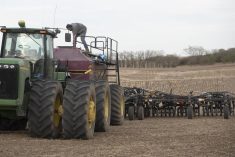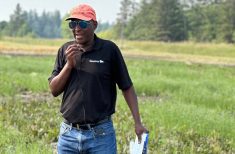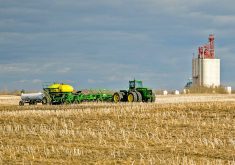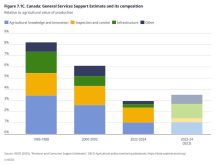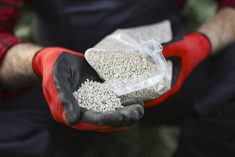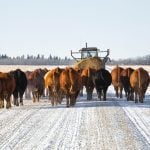When Rick Rutherford starts to plan his crop, he begins at the end – the end of the last growing season, that is.
The Grosse Isle-area seed grower and owner-operator of Rutherford Farms sits down, current year’s yield map in hand, with agronomist Dave Ives of Enns Brothers to plan for the following spring.
Read Also

Still hard to predict precise fertilizer payback
Despite decades of advances, international research finds no clear answer for where and when adding nutrient will fail to boost growth.
“It’s the report card,” Rutherford said at a recent 4R event organized by the Enterprise and Machine Intelligence and Learning Initiative (EMILI). “It tells us exactly how we’ve done that year, and what’s happened in the field.”
Why it matters: Emissions reductions could be an economic win, cutting-edge farmers say.
Combining the yield map with more than a decade’s worth of field data, augmented with EMILI’s sensors, weather stations and field imagery, Rutherford and Ives drill into what the year’s numbers mean for their plan next year.
“We’re like detectives, poring over the data,” Ives told tour participants.
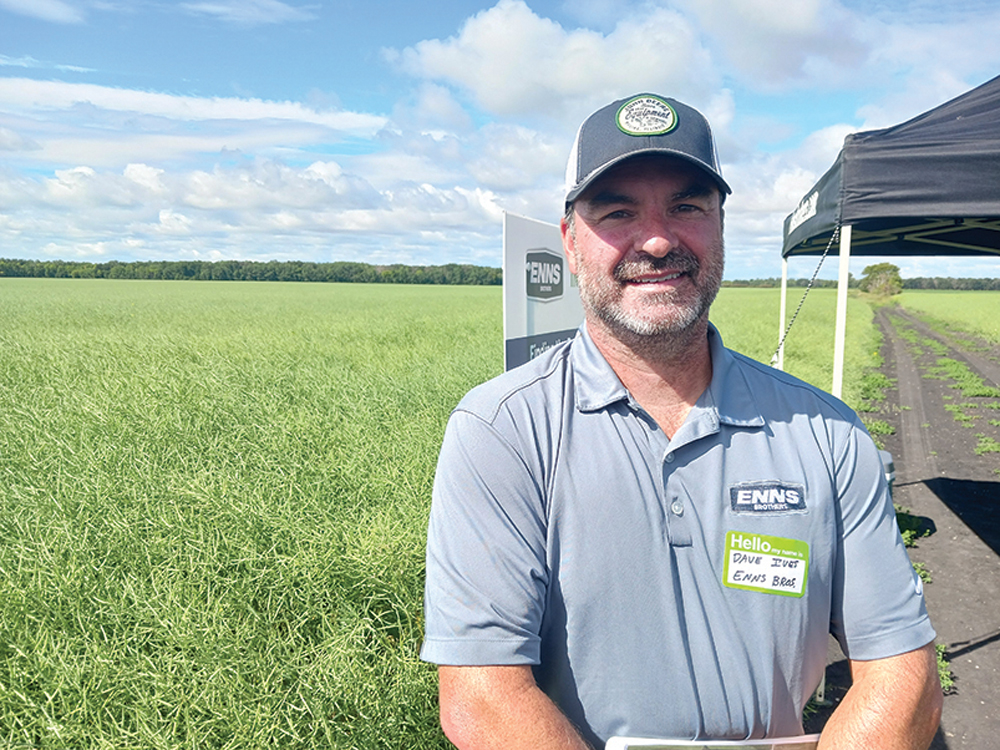
Setting goals
Rutherford says the most important question is how uniform the yield is. If it varies just a little bit across the field, it likely means there’s a similar soil fertility picture below the surface.
“If it’s uniform, we’ll soil sample uniformly,” Rutherford said. “If it’s variable, we’ll break it up into zones and soil sample that way.”
Once the soil sampling is complete, they can zone the fields. That process doesn’t have to be onerous, attendees heard, and is frequently based on the simple visual cues found in yield maps, zone soil test results and other available visual imagery.
“We’ve drawn the zone maps by hand sometimes,” Rutherford said.
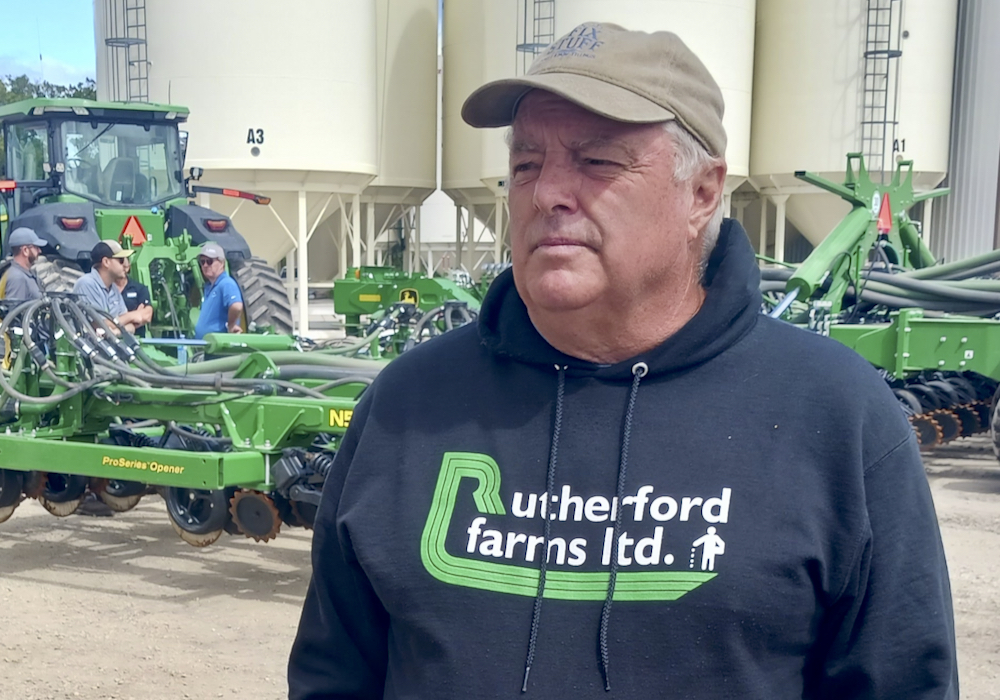
The goal is to match available residual nitrogen to crop need. For example, the target for wheat and canola is 180 pounds an acre. If one portion tests at 120 pounds available per acre, that part of the field will get a 60-pound top up. Another portion that’s at 50 pounds of residual N would get 130 pounds.
“That’s going to be a lot more efficient than just putting a blanket 120 pounds on everything,” Rutherford said.
In the end, he hopes to build a farm that’s environmentally sustainable, but more importantly, is also economically sustainable.
“That’s the bottom line for me,” he said.
Equipment
A key element on the operation is a John Deere DB 60 planter, which allows Rutherford to apply up to five products at variable rates.
“That drill has a lot of capability to split up nutrient applications as we want,” said Ives.
Virtually all the farm’s nitrogen is incorporated at time of planting and from two main sources, anhydrous ammonia and coated urea, at varying rates. The anhydrous is applied deep enough to ensure it’s captured within the soil, and the coated urea also prevents off-gassing.
Myth busters
The two have spent a significant amount of time “ground truthing” established best practices, often with surprising results. For example, they’re seeding wheat at a much lower rate today than a few years ago and they’re making money doing it.
While conventional wisdom says seeding rate should be around two and a half or three bushels an acre, the farm is now seeding at a bushel and a half per acre. The result is a stand that puts its energy into producing seed rather than lush vegetative growth, Rutherford said, and the farm has been seeing about $50 more return per acre.
“We’ve pretty much found the sweet spot seeding rate for wheat,” Ives said.
That better bottom line comes from a variety of factors, including lower seed costs and skipping the application of a growth regulator.
Added up, the savings more than justify the price of the advanced planter, Rutherford said.
“If you’re saving 10 per cent on 7,000 or 8,000 acres, that really starts to add up.”
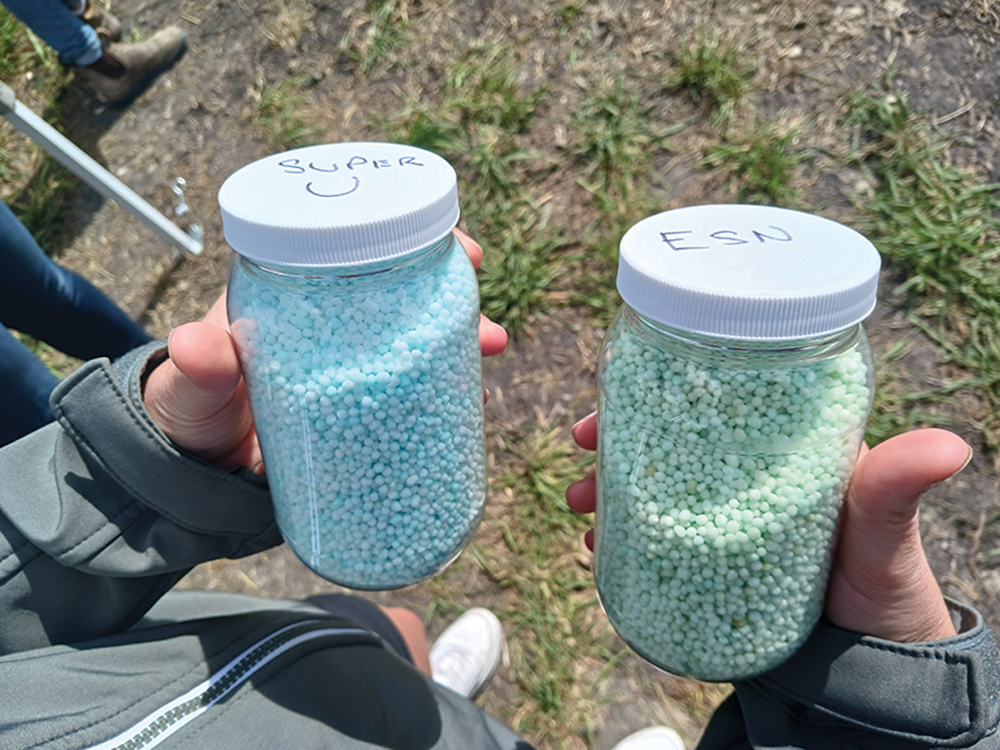
Digging deep
Another stop on the tour featured former provincial soil specialist John Heard, who delved into all the leaks in the nutrient cycle. He said understanding key points can help farmers plug those leaks and gain efficiency in the process.
“I’m pretty humble about trying to tell farmers in Manitoba how to manage their farms. Most farmers are already doing these things and if they’re not, there’s generally a really good reason for it.”
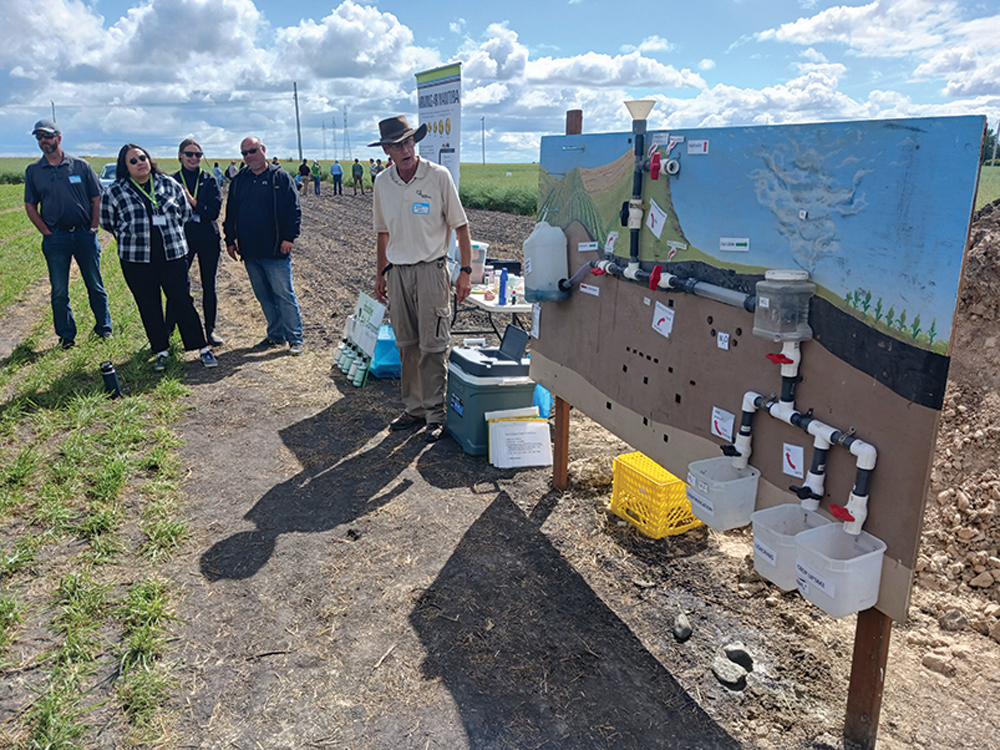
Those reasons are often economic, he noted, including reluctance to adopt more expensive coated nitrogen sources and lack of availability for more advanced equipment.
Heard said one key danger zone is surface-applied UAN, especially on wet soils that are losing moisture, and high-pH soils.
“We can lose quite a bit right here over the course of a few warm days,” he warned.
Mitchell Timmerman, Manitoba Agriculture agri-ecosystems specialist, joined Heard at the tour station, which had a six-foot-deep soil pit to showcase the soil profile and demonstrate how that profile affects nutrient management in the field above.
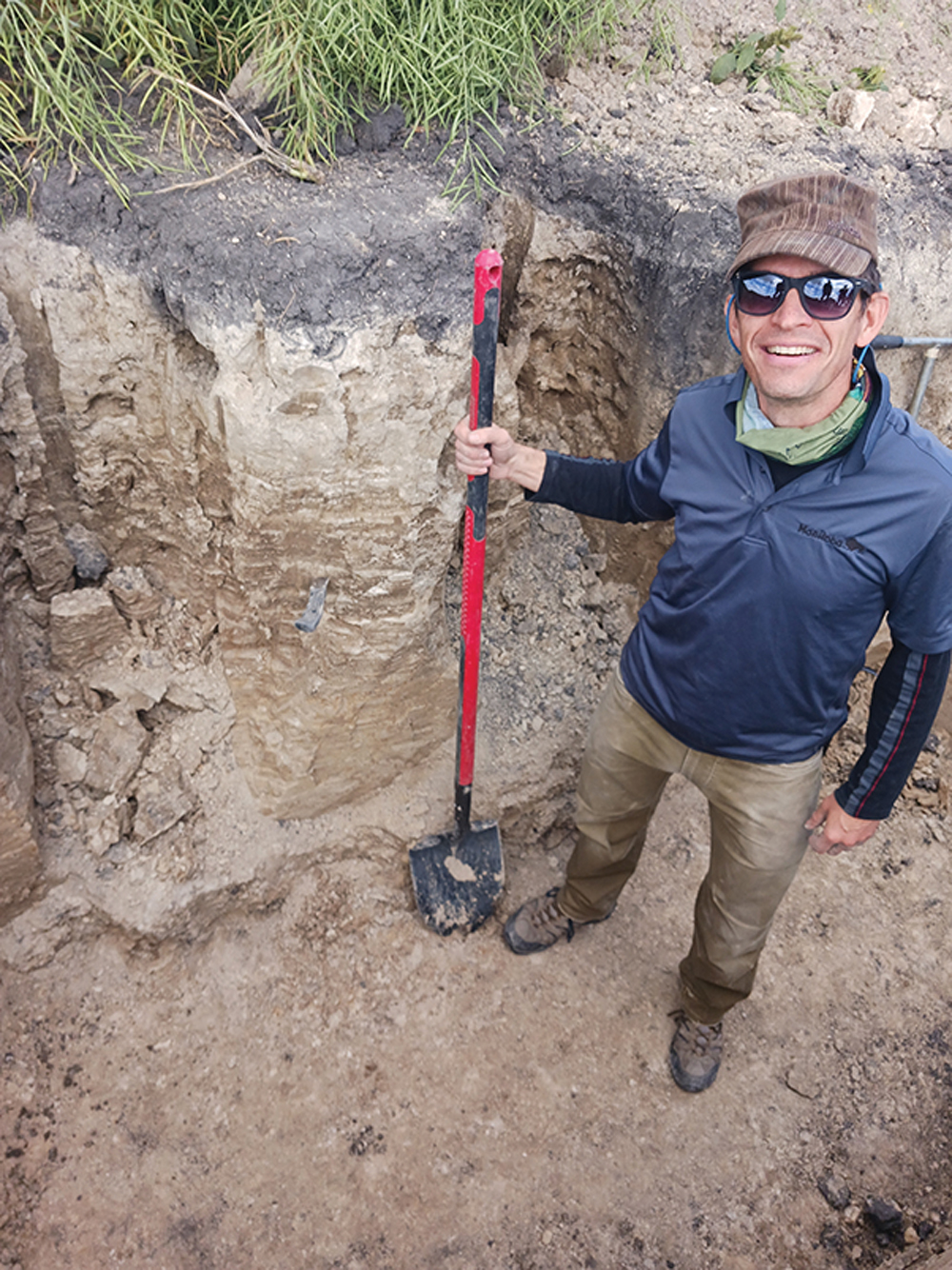
“This is the poorly drained Osborne clay,” Timmerman said, from the bottom of his soil pit. “It’s a cousin to the well-drained Red River clay, with a slight difference in topography.”
That slight difference makes it harder to manage and more prone to nutrient loss, Timmerman said. Add a pH that hovers around eight, and it’s a challenging place to manage nutrients.
Closely watched
EMILI has been conducting research at Rutherford Farms since 2019, but it formalized the partnership in fall 2022. It is now building a permanent facility on the farm.
Danielle Bérard, Innovation Farms manager, says the decade of data collection by Rutherford, starting in 2014, is one reason the research is possible.
“That data has been invaluable,” she said.
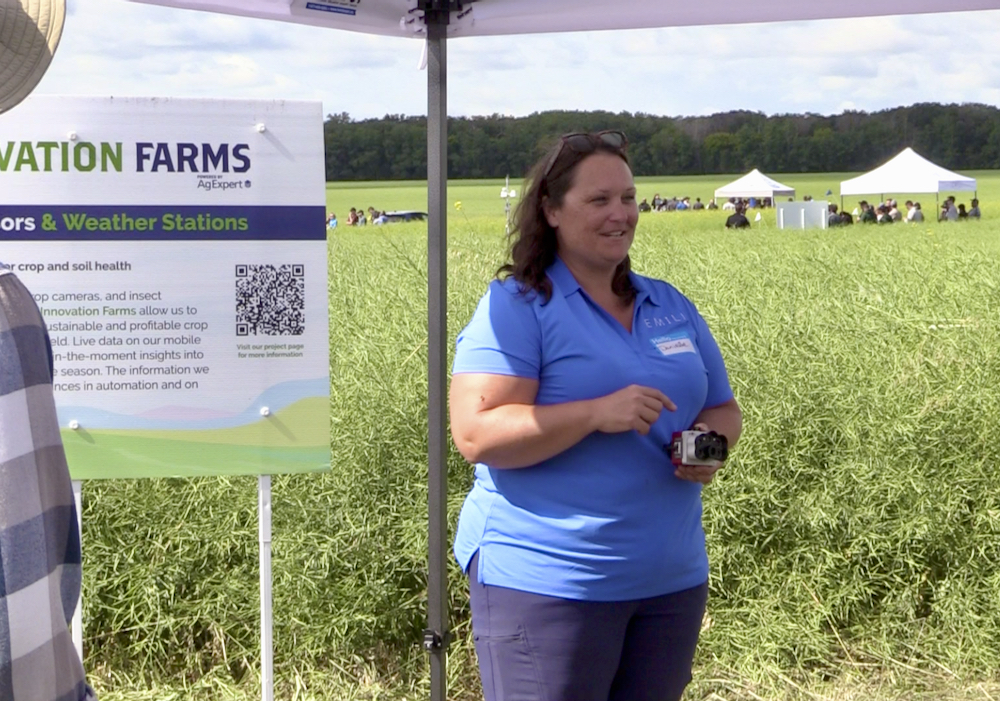
Now the group is taking field surveillance to another level. They’ve got eight Pessl weather stations with soil probes installed on the 5,500-acre operation and are using satellite, NDVI and drone imagery to augment them.
Innovation Farms is ultimately planned as a showcase destination and proving ground for emerging agriculture technology, one that answers basic and practical farmer questions.
“When I talk to farmers, they want to know two things,” Bérard said. “They want to know ‘what does it cost?’ and ‘how does it work on my neighbour’s field?’”
Rutherford said the trials are all done at field scale with commercial equipment, which is key to making the work relatable to farmers.
“I said right from the start, I didn’t want to be a research farm,” he said. “That’s what we are, of course, but it’s not a lot of small plots and stakes. It’s all on a field scale and stored in an app.”




